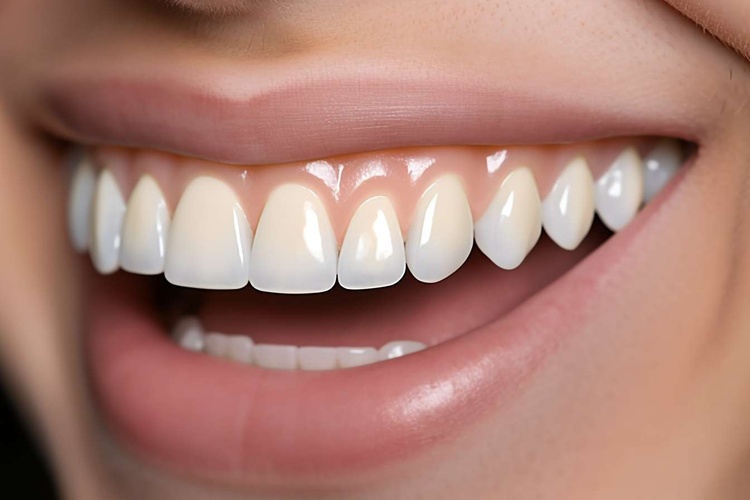How Much Will Dental Implants Cost You in Australia in 2025?
Dental implants in Australia can last for decades with over a 90% success rate. Discover the actual costs and effective financing tips to achieve a high-quality and affordable smile restoration that ensures lasting satisfaction and confidence for patients of all ages.

Pricing Overview for Dental Implants in Australia in 2025
In 2025, the cost of a single dental implant in Australia typically ranges from $2,400 to $5,000. This depends on factors such as location, materials used, and whether the implant is restored with a crown and abutment. For instance:
- Single unrestored implants may start at around $2,400 (e.g., in Perth).
- Single restored implants, including crown and abutment, usually cost between $3,999 and $4,999 depending on the region.
For those considering replacement of an entire arch or full mouth, expenses tend to be higher:
- Full arch implant options, such as All-on-4 or All-on-6 procedures, range between $23,000 and $32,500 per jaw, with average prices typically between $25,000 and $28,750 depending on complexity, materials, and implant count.
These prices generally cover the complete treatment package, including surgery, restorative crowns, and aftercare.
Factors That Affect the Cost of Dental Implants
Several important elements influence dental implant costs in Australia:
- Number of implants needed: Single implants cost less than multiple implants or full mouth restorations.
- Type of implant: Standard implants are most common; however, advanced types like zygomatic or pterygoid implants, which anchor in different bone areas, tend to be more expensive due to their complexity.
- Materials used: Titanium implants are commonly used for their strength and durability. Zirconia implants offer a more aesthetic white appearance but usually carry higher costs—possibly adding several thousand dollars to full mouth treatments—and may have specific durability considerations.
- Additional surgical procedures: Some patients require bone grafts, sinus lifts, or other preparatory surgeries that increase the total expense.
- Dentist expertise and location: Procedures performed by highly experienced dental surgeons or in metropolitan regions with a higher cost of living usually have greater fees.
- Technology: Advanced imaging, such as 3D CBCT scans or guided implant surgery, may add to the cost but improve accuracy.
What Is Typically Included in Dental Implant Pricing
When planning your budget, it’s essential to know what might be included or added to dental implant fees:
- Initial consultation fees (some clinics offer free consultations)
- Radiographs and 3D imaging scans
- Surgical procedure expenses, including anesthesia
- Crown and abutment fabrication and placement
- Follow-up appointments and adjustments
- Maintenance and hygiene visits over time
Patients are advised to request a detailed, itemized treatment plan and full quote before starting treatment to fully understand all potential costs.
Comparing Dental Implant Costs in Australia with Overseas Options
Dental implants in Australia often cost 50-70% more than in some other countries like Thailand or Mexico. While overseas options may offer lower prices, considerations include:
- Variations in regulatory standards for materials and equipment
- Potential differences in infection control protocols
- Challenges related to travel and access to follow-up care
Opting for local dental care can provide benefits related to safety, quality assurance, and convenient access for ongoing maintenance.
Financing Choices for Dental Implant Treatment in 2025
Given that dental implants can require a significant financial commitment, various financing options are available in Australia:
- Payment plans: Many clinics partner with finance providers to offer payment plans allowing costs to be spread over time.
- Private health insurance: Some extras cover plans may reimburse part of the implant-related expenses, especially when implants are medically necessary rather than cosmetic.
- Government and veteran assistance: Veterans may qualify for subsidized or free implant services via the Department of Veterans’ Affairs (DVA), if eligible. Low-income earners or pensioners might access government programs that assist with dental treatment; eligibility varies.
Patients should discuss available financial support options with their dental provider and insurance representatives prior to beginning treatment.
Considerations for Suitability of Dental Implants
Candidacy for dental implants generally depends on factors including:
- Sufficient jawbone density to support the implant
- Overall health adequate for minor surgery
- Commitment to maintaining oral hygiene and attending follow-ups
- No medical conditions that could hinder healing (e.g., uncontrolled diabetes)
A complete evaluation, including imaging and health history review, will help dental professionals assess suitability and whether preparatory procedures are needed.
Overview of the Implant Procedure and Aftercare
The dental implant process commonly includes:
- Administration of local anesthesia to reduce discomfort
- Surgical placement of implant posts into the jawbone
- A healing period of several months for osseointegration (bone bonding to the implant)
- Attachment of abutments and crowns once healed
- Mild postoperative pain that usually subsides within a few days and is manageable with standard pain relief
Aftercare involves:
- Routine dental check-ups every 3 to 6 months to monitor implant and oral health
- Maintaining oral hygiene practices similar to natural teeth
- Awareness of symptoms that could signal problems, such as ongoing pain or implant looseness
Selecting a skilled dental surgeon can encourage successful outcomes and reduce risks.
Long-Term Outcomes and Value of Dental Implants
Dental implants in Australia boast success rates commonly between 90% and 98% over 10 years or more when properly cared for. Implants can often last 20 years or longer. Noted benefits include:
- Preserving jawbone health and minimizing bone loss
- Supporting facial structure and a natural appearance
- Improving chewing efficiency compared to dentures or bridges
- Decreasing the risk of adjacent teeth shifting compared to some traditional restorations
Although initial costs may be higher, many patients regard dental implants as a durable solution that supports oral health and quality of life.
In 2025, dental implant costs in Australia range roughly from $2,400 for a single implant to over $25,000 for full arch restorations, influenced by materials, procedures, and location. Financing options and insurance coverage can help with affordability. Dental implants generally have a high success rate and provide long-term functional and aesthetic advantages. Consulting with dental professionals for personalized advice and quotes is recommended.
Sources
- Radiant Smiles Dental Care
- Dental Implant Costs Australia
- Complete Dental
- Dental Implants Price Australia
- Radiant Smiles Dental Care - Full Mouth Dental Implants Cost Australia
- https://radiantsmiles.com.au/dental-implant-costs-australia/
- https://completedental.net.au/blog/dental-implants-price-australia/
- https://radiantsmiles.com.au/full-mouth-dental-implants-cost/
Disclaimer: All content, including text, graphics, images and information, contained on or available through this web site is for general information purposes only. The information and materials contained in these pages and the terms, conditions and descriptions that appear, are subject to change without notice.




